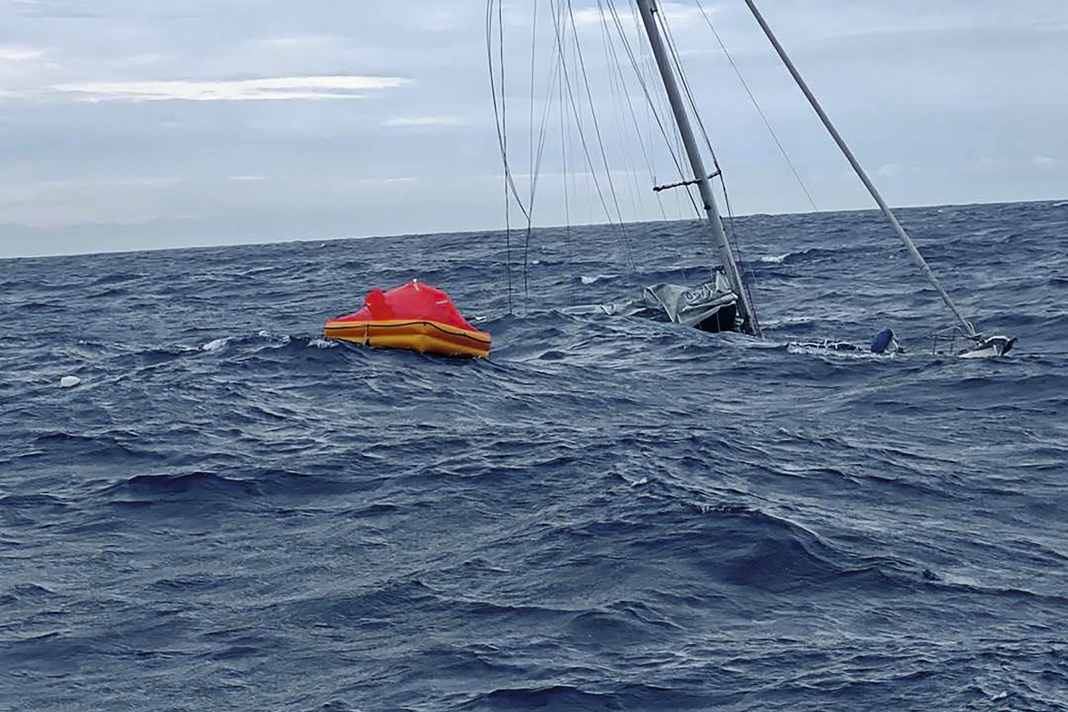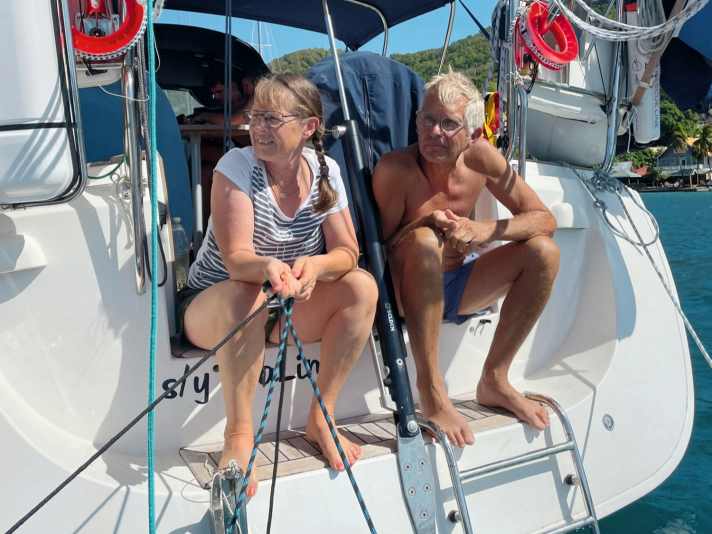Sinking after rudder loss: Owners report how they experienced the accident involving their Arcona 460






How are you doing today? Have you been able to recover well from the dramatic loss of your ship?
Katarina Bååth Ravudd: Yes, we are doing well again. Of course, many memories and personally valuable items went down with the ship. On our trip, we bought pictures, clothes and other paraphernalia to remind us of the wonderful time we had. We don't collect the typical souvenirs, but things that we can also use in everyday life. It's sad that it's all gone.
When and where did you set off on your long journey?
Ingmar Bååth Ravudd: We set sail from Gustavsberg near Stockholm in August 2021. The same place where the Arcona shipyard is based.
Have you travelled the classic barefoot route?
Ingmar: Initially yes, but after French Polynesia we changed our minds and instead wanted to sail via Hawaii to Alaska and then head south to explore the west coast of North America. After another passage through the Panama Canal, we wanted to devote ourselves to the northern part of the Caribbean before heading back home to Sweden.

Where exactly did the accident occur?
Katarina: About 290 nautical miles east of the Marquesas Islands at a position of 8°22'07''S and 135°51'04''W. We are glad not to have lost the rudder all alone between Hawaii and Alaska, but in the comparably comfortable situation we found ourselves in: Friends were so close to us in their boat that we were able to radio them.
Were you running under engine power when the rudder stock broke? On the pictures of the sinking ship you can see the rolled-up genoa and the salvaged main.
Ingmar: No, we were sailing at about 140° before the wind, which was between 15 and 20 knots. The first thing we did was to take the sails down to stabilise the rudder, as we had a lot of speed and corresponding rudder pressure. To do this, we had to detach the autopilot from the shaft so that we could go into the wind. Until then, the boat was still on course, despite the breakage.
Do you have any idea how the break could have happened?
Ingmar: No, we didn't see anything floating in the water around us and we didn't hear any ramming noise. There was suddenly just a sharp sound, after which the steering wheel no longer had any effect on the rudder. At first we thought that the steering ropes must have broken. The broken rudder stock was a big surprise.
What did you do then?
Katarina: Ingmar pulled a rope through the lower quadrant and then tightened it with a winch. We wanted to stabilise the rudder upwards in this way. In order to minimise the back-and-forth movement of the shaft, we replaced the bottom plate with the guide hole. When the plate fell down, the lower rudder bearing punched a 15 centimetre hole in the hull. Our attempts to plug the hole with on-board equipment all failed, and the bilges were also unable to pump out the inflowing water quickly enough.
How long did you fight for the "IdaLina"?
Ingmar: At 1.11 pm we sent a radio message to our friends on the "Pacific Wind" asking for help. After an hour and a half of hard work, we had to admit that the boat could not be saved. Saying that out loud was the worst moment. Then we triggered the life raft, packed up and left the ship. Our friends from the "Pacific Wind" arrived so quickly that we were rescued 25 minutes later. At 3.48 pm, "IdaLina" disappeared under the surface of the water.
The broken rudder and the sinking of the Arcona 460 in the video
What were you able to save?
Katarina: We were pretty well prepared for an evacuation. Thanks to stowage and emergency plans, we knew where everything was stowed on deck and in the interior and what we needed to take with us in an emergency. In addition to the grab bag for the emergency equipment, we had others to secure computers, iPhones, GoPro camera, wedding rings, passports, laminated documents, a few clothes and food. In total, we had taken nine waterproof bags into the life raft. Even though the other boat was so close, we took extra food and water with us in case they couldn't find us so quickly. As well as fresh vegetables, there was even a freezer bag of cheese in one bag. So we could at least enjoy a cheese moment with our rescuers. (Laughs)
Did the return journey to Sweden go smoothly?
Katarina: Unfortunately, the next drama followed immediately after our shipwreck. My sister called me one morning and told me that our mum had suffered a brain haemorrhage. So we flew home as quickly as possible and just managed to see her before she passed away. All in all, there was a bit of drama over the last few weeks, but again, we were lucky.
How old was your boat, and were you the first owners?
Katarina: No, we were already the second owners of "IdaLina". Our Arcona 460 was built in 2008 and we bought her nine years later in order to trim her for blue water.
How did you modify the boat to suit your needs?
Ingmar: Firstly, we had the cockpit converted by the Arcona shipyard so that we could install a second helm station. In addition to the usual long-distance equipment such as solar panels, a wind generator and a hydrogenerator, we also invested in beautiful carbon sailcloths.
Why the expensive high-performance sails?
Katarina: My husband is always in regatta mode, even when we are travelling alone on the ocean. Ingmar works non-stop with the sails. He can't help it.
Ingmar: I used to be a passionate regatta sailor. But a good trim is also better for the life of the sails and the stability of the boat. (Smiles)
Are you planning to buy a new boat again?
Ingmar: Definitely! We've both been sailing since childhood and it's part of our identity. This summer we're going to have a good rest and take care of family matters. Then we'll start looking for a smaller, sporty boat. I could very well imagine a First 24 from Beneteau. Not only is it suitable for touring and regattas, it's also unsinkable. Preparing a new boat for a long voyage is too complicated and time-consuming for us. We knew the "IdaLina" inside out and refitted it exactly to our needs and safety requirements. We can't do that again. Instead, we will choose interesting places and hire a boat there. Maybe we'll charter a boat in Vancouver to explore British Columbia, as we had originally planned. In Sweden, the small boat will be enough for us to sail the archipelago and lakes.

